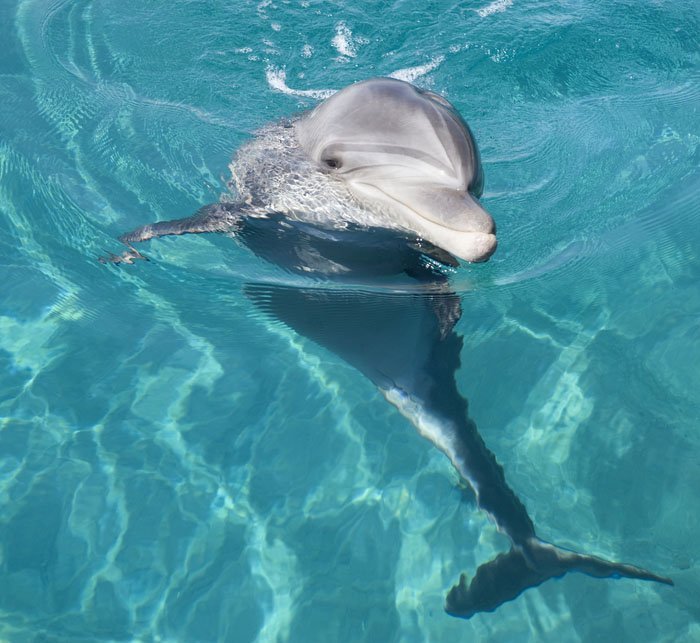Dolphins

Dolphins (Delphinidae) Overview
These fascinating mammals are intriguing, graceful and fun to watch. They rely on several forms of communication, including whistling and body language and use echolocation (sonar) to find food. As many as 15 species of dolphin, including bottlenose and spinner dolphins, can be found in Hawaiian waters. If you come across dolphins while swimming in the ocean, the keyword to remember is respect:
- Do not attempt to touch wild dolphins - it is illegal. There are several programs in the islands that work with domesticated dolphins that may allow you to make contact.
- Do not make aggressive, sudden or jerky movements.
- Swim parallel with the dolphins.
- Remember you are in their home. Allow the dolphins to make any "first moves" toward interaction.
Frequently Asked Questions
How many dolphin species live in Hawaiian waters?
There are about 15 species of dolphins found in Hawaiian waters, including the well-known bottlenose dolphin and the acrobatic spinner dolphin.
How do dolphins communicate?
Dolphins use a combination of clicks, whistles, and body language. They also rely on echolocation to navigate and hunt, sending out sound waves that bounce off objects around them.
Is it legal to swim with wild dolphins in Hawaii?
No, approaching or touching wild dolphins in Hawaii is illegal under federal law. It is important to respect their space and observe from a distance. Licensed programs with domesticated dolphins may offer interaction opportunities.
What should I do if I see dolphins while swimming?
Stay calm and swim parallel to the pod. Avoid sudden movements or trying to touch them. Let the dolphins choose whether to approach you - never chase or corner them.
Where are the best places to spot dolphins in Hawaii?
Dolphins are commonly seen along the coasts of Oahu, Maui, and the Big Island. Areas like the Waianae Coast, Kealakekua Bay, and Lanai's southern shoreline are popular dolphin-watching locations.








